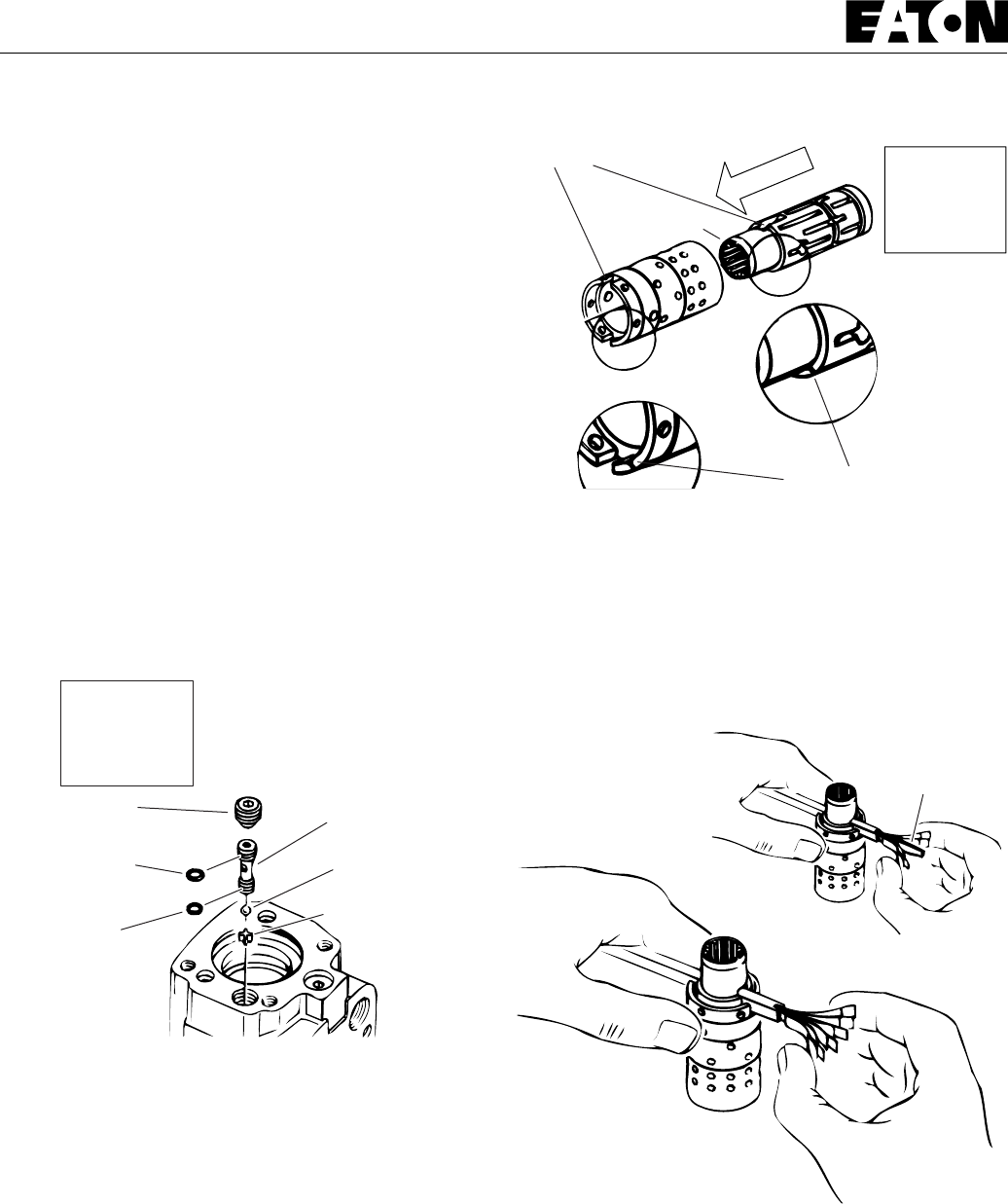
110, 230, and 450 Series Steering Control Units
7
Low Torque
Spring Spacers (2)
Standard Torque
23 Screw a #10-24 machine screw into end of check ball seat. Then
lift seat out of housing by pulling on screw with pliers.
24 Remove two seals from check valve seat.
25 Tip housing to remove check ball and check ball retainer.
26 Do not remove any valves other than manual steering check valve
assembly and anti-cavitation valve assembly. All other valves are
factory preset and are non-serviceable.
Reassembly
Check all mating surfaces. Replace any parts that have scratches or
burrs that could cause leakage. Clean all metal parts in clean solvent.
Blow dry with air. Do not wipe dry with cloth or paper towel because
lint or other matter can get into the hydraulic system and cause
damage. Do not use grit paper or file or grind these parts.
Note: Lubricate all seals with clean petroleum jelly (Vaseline). A good
service policy is to replace all old seals with new seals. Do not use
excessive lubricant on seals for meter section.
Refer to parts lists covering your steering control unit when ordering
replacement parts.
Control End
You may skip steps 1 through 5 if the early design manual steering
check valve does not apply in the unit you are servicing.
1 Use a needle nose pliers to lower check ball retainer into check
valve hole in housing (when applicable). Make sure retainer is straight
in housing (not tilted on edge – see figure 13).
2 Install check ball in housing.
3 Lubricate 9,2 mm [.36 in.] ID seal and 7,6 mm [.30 inch] ID seals.
Install seals on check ball seat as shown in figure 13.
4 Lubricate check ball seat and seals thoroughly before installing
seat in housing. When installing seat do not twist or damage seals.
Install check ball seat in housing, inserting open end of seat first
(figure 13). Push check ball seat to shoulder of hole.
5 Install set screw. Use a 1/4 in. hex key to torque set screw to 11
Nm [100 lb-in] maximum. To prevent interference, make sure top of
set screw is slightly below housing mounting surface.
6 Assemble spool and sleeve carefully so that spring slots line up at
the same end. Rotate spool while sliding parts together. Some spool
and sleeve sets have identification marks; align these marks as shown
in figure 14. Test for free rotation. Spool should rotate smoothly in
sleeve with fingertip force applied at splined end. Align spring slots in
spool and sleeve and stand parts on end of bench.
7 Centering Springs for Low Input Torque Units:
Low input torque
units use four centering springs with two spring spacers in the center,
as shown in Figure 15.
Centering Springs for Standard Input Torque Units:
Standard input torque units use six centering springs, as shown in
figure 15. Insert spring installation tool (PartNo. 600057) through
Disassembly/Reassembly
Figure 13
Figure 14
Figure 15
Check Ball Seat
Check Ball
Set Screw
O-ring
9,3 mm
[.36 in.] ID
O-ring
7,7 mm
[.30 in.] ID
Check Ball Retainer
Manual Steering
Check Valve –
Early Design
Shown Here
Spring Slot
Input Shaft End
Assemble
Input Shaft
End First
Control Spool
Control Sleeve
Identification Marks














